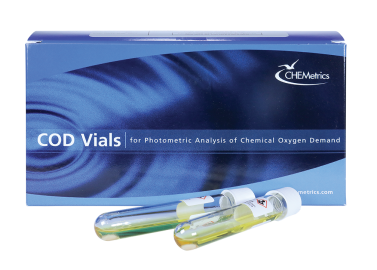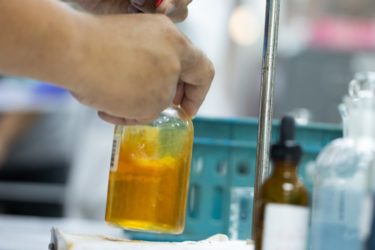| |  | |
| | | |
| Oxygen Demand: Distinguishing COD and BOD Methods of
Analysis | |
| | | |
| | Introduction
| |
| | Oxygen demand measurements are used to estimate water pollution
levels entering and leaving wastewater treatment and industrial facilities.
Particularly close attention is paid to effluents as high oxygen demand levels
indicate a danger to aquatic life. Since treatment facilities are considered
point sources, they are regulated under the Clean Water Act (CWA) which in turn
sets facility specific pollutant release targets as part of the National Permit
Discharge Elimination System (NPDES) permitting process. NPDES permits usually
specify limits related to oxygen demand based on either the Biochemical Oxygen
Demand (BOD) or Chemical Oxygen Demand (COD) methods of analyses.
| |
| | | |
| | BOD Testing
| |
| | BOD measures how much dissolved oxygen (DO) is consumed by
microorganisms to decompose organic matter under aerobic conditions. Testing
for BOD involves incubating a sealed water sample at 20C for five days,
followed by measuring the difference in oxygen content before and after
incubation.
| |
| |  | |
| | | |
| |  | |
| | | |
| | COD Testing
| |
| | COD measures how much DO is consumed by the oxidation of
organic matter and inorganic compounds such as ammonia or nitrite under
controlled conditions. COD testing typically involves digestion of the water
sample in a sealed vial with potassium dichromate and sulfuric acid at 150C for
2 hours. Vials are read in a spectrophotometer to determine results.
| |
| | | |
| | Comparison
| |
| | Of the two tests, COD analysis is more commonly performed as
it takes less time and is more replicable. Furthermore, treatment operators can
quickly react to changes in oxygen demand and modify treatment processes
appropriately. Plant engineers may establish a statistically validated COD/BOD
ratio to demonstrate their ability to reliably predict a BOD value based solely
on a COD measurement to their permitting authority. The COD value may be used
as justification for BOD removal from a plant permit.
| |
| | | |
| | Conclusion
| |
| | CHEMetrics offers a comprehensive line of USEPA-accepted COD
vials. K-7350S is for low range measurements (0-150 ppm) while K-7360S is for
high range measurements (0-1,500 ppm). While not USEPA-accepted, K-7370S can
measure up to 15,000 ppm. CHEMetrics also offers a line of mercury-free vials
(K-7351S, K-7361S, and K-7371S) that are more convenient for disposal.
| |
| | | |
| |
| |
| | | |
| | Download PDF of this article | |
| |  Oxygen Demand: Distinguishing COD and BOD Methods of Analysis Oxygen Demand: Distinguishing COD and BOD Methods of Analysis | |
| | | |
| | | |